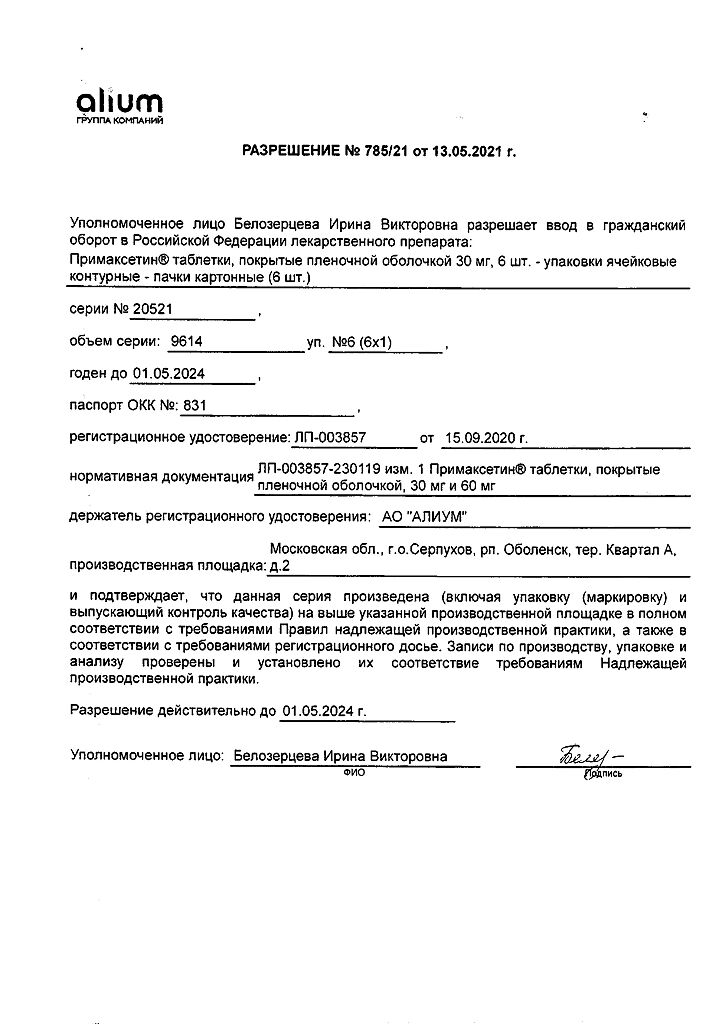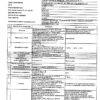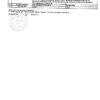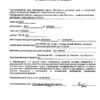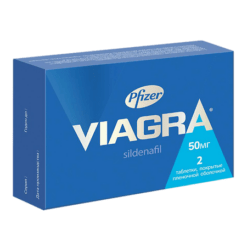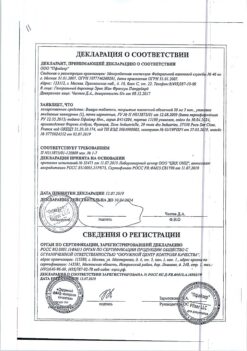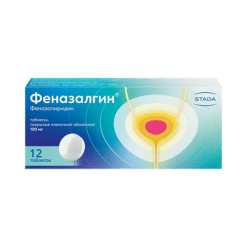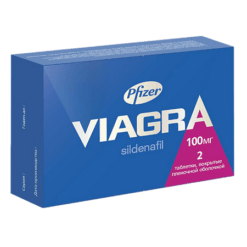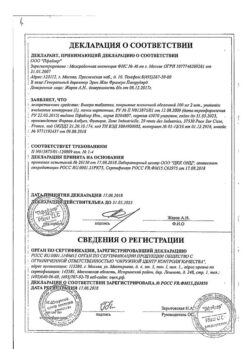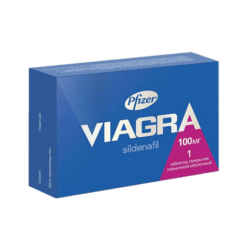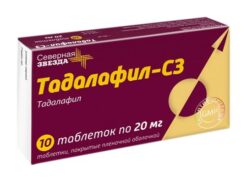No products in the cart.
Primaxetine, 30 mg 6 pcs
€22.63 €18.86
Description
Pharmacotherapeutic group:
A treatment for premature ejaculation.
The ATX code: G04BX14
Pharmacological properties
Pharmacodynamics
The mechanism of action of dapoxetine in premature ejaculation is thought to involve inhibition of serotonin reuptake by neurons, with subsequent enhancement of neurotransmitter action at pre- and postsynaptic receptors.
The mechanism of ejaculation is regulated primarily by the sympathetic nervous system. Postganglionic sympathetic nerve fibers innervate the seminal vesicles, seminal duct, prostate, urethral and bladder neck muscles, causing their coordinated contraction to achieve ejaculation.
Dapoxetine affects the ejaculation reflex by increasing the latent period and decreasing the duration of reflex impulse of the motoneurons of the perineal ganglia. The stimulus that triggers ejaculation is generated in the spinal reflex center, which is controlled through the brain stem by several brain nuclei, including the preoptic and paraventricular.
Pharmacokinetics
absorption
Dapoxetine is rapidly absorbed, and the maximum plasma concentration (Cmax) is reached 1-2 hours after taking the drug. Absolute bioavailability is 42% (range 15-76%). After a single oral dapoxetine dose of 30 mg and 60 mg on an empty stomach, the maximum plasma concentration is 297 ng/ml (after 1.01 hours) and 498 ng/ml (after 1.27 hours), respectively.
Eating a fatty meal moderately decreases the Cmax of dapoxetine (by 10%) and increases the AUC (area under the concentration-time curve) and time to reach maximum plasma concentration by 12%. However, the degree of absorption of dapoxetine is not changed. These changes are not clinically significant. Primaxetine® may be taken regardless of meals.
Distribution
More than 99% of dapoxetine is bound to plasma proteins in vitro. The active metabolite, desmethyldapoxetine, binds 98.5% to plasma proteins. Dapoxetine is rapidly distributed throughout the body with an average equilibrium volume of distribution of 162 liters. When administered intravenously in humans, the average half-life in the initial, intermediate and terminal phases of excretion is 0.10, 2.19 and 19.3 hours, respectively.
Metabolism
In vitro studies suggest that dapoxetine is metabolized by many liver and renal enzymes, especially CYP2D6, CYP3A4, and flavin-containing monooxygenase (FMO1) of the kidneys. In a clinical study that examined the metabolism of 14C-dapoxetine, dapoxetine was actively metabolized after oral administration primarily by the N-oxidation, N-demethylation, naphtho-group hydroxylation, glucuronidation, and sulfo-group attachment routes. After oral administration, there are signs of presystemic metabolism in the liver. The main components circulating in plasma were intact dapoxetine and dapoxetine-N-oxide. In in vitro studies, dapoxetine-N-oxide was found to be inactive. In addition, desmethyldapoxetine and didesmethyldapoxetine were detected in amounts of less than 3% of the total circulating metabolites of dapoxetine. In an in vitro study, desmethyldapoxetine was found to be comparable in activity to dapoxetine, while didesmethyldapoxetine was about half as active as dapoxetine. Exposure (AUC and Cmax) of unbound desmethyldapoxetine was 50% and 23% of unbound dapoxetine, respectively. Elimation
Dapoxetine metabolites are excreted mainly in the urine as conjugates. The unchanged active ingredient is not detected in the urine. Dapoxetine is rapidly excreted, as evidenced by the low plasma concentration of the substance (less than 5% of maximum) 24 hours after taking the dose. When administered daily, the accumulation of the substance in the body is minimal. When administered orally, the terminal elimination half-life is approximately 19 hours.
Special patient groups
Race
A single administration of dapoxetine at a dose of 60 mg showed no statistically significant difference in performance among Europeans, persons of the Negro race, Hispanics, and persons of the Asian race. Comparison of dapoxetine pharmacokinetics in Europeans and Japanese showed higher Cmax and AUC values in the latter (by 10-20%) due to lower body weight. Higher systemic exposure is unlikely to cause a significant difference in clinical effect.
Elderly patients (65 years and older)
. A single dose of dapoxetine 60 mg showed no significant difference in pharmacokinetics (Cmax, AUC, Tmax) between healthy older men and younger men.
The mean AUC of dapoxetine and the final half-life were 12% and 46% higher, respectively, in older men compared to younger men.
Kidney function impairment
. A single dose of dapoxetine 60 mg showed no relationship between creatinine clearance and Cmax or AUC of dapoxetine in patients with mild (creatinine clearance 50-80 ml/min), moderately severe (creatinine clearance 30 to <50 ml/min) and severe (creatinine clearance <30 ml/min) renal dysfunction. The AUC of dapoxetine in patients with severe renal impairment was approximately 2 times higher than in patients with normal renal function. There are limited data on the use of the drug in patients with severe renal impairment. The pharmacokinetics of dapoxetine have not been studied in patients requiring hemodialysis.
Hepatic impairment
In patients with mild hepatic impairment, the pharmacokinetics of dapoxetine and desmethyldapoxetine have not changed. In patients with moderate hepatic impairment (Child-Pugh class B), the Cmax and AUC of unbound dapoxetine were increased by 55% and 120%, respectively. The cmax of the unbound active fraction of dapoxetine was unchanged, and the AUC was doubled.
In patients with severe hepatic impairment, the Cmax of unbound dapoxetine was unchanged and the AUC of unbound dapoxetine was more than 3-fold increased. The AUC of the active fraction was also increased several-fold.
CYP2D6 polymorphism
. Plasma concentrations of dapoxetine after a single dose of Primaxetine® at 60 mg were higher in patients with low CYP2D6 activity than in patients with high CYP2D6 activity (Cmax by approximately 31%, AUC by approximately 36%). Similarly, the Cmax of desmethyldapoxetine in patients with low CYP2D6 activity was increased by 98% and the AUC by 161%. The mean final half-life of dapoxetine was increased by 2.4 hours in patients with low CYP2D6 isoenzyme activity compared with patients with high CYP2D6 isoenzyme activity. The cmax of the active fraction of dapoxetine is increased by – 46% and the AUC by – 90%. This increase may be accompanied by an increased frequency and severity of dose-dependent adverse events. The safety of Primaxetine® administration in patients with low CYP2D6 activity may be in doubt in concomitant administration of other drugs that may inhibit dapoxetine metabolism, particularly active and moderately active CYP3A4 inhibitors.
Patients with ultra-high CYP2D6 activity are expected to have lower plasma concentrations of dapoxetine and desmethyldapoxetine.
Indications
Indications
The drug Primaxetine® is intended for the treatment of premature ejaculation in men aged 18 to 64 years.
Pharmacological effect
Pharmacological effect
Pharmacotherapeutic group:
Premature ejaculation treatment.
ATX code: G04BX14
Pharmacological properties
Pharmacodynamics
It is assumed that the mechanism of action of dapoxetine in premature ejaculation is associated with inhibition of the reuptake of serotonin by neurons with a subsequent increase in the action of the neurotransmitter on pre- and postsynaptic receptors.
The mechanism of ejaculation is regulated mainly by the sympathetic nervous system. Postganglionic sympathetic nerve fibers innervate the seminal vesicles, vas deferens, prostate gland, urethral and bladder neck muscles, causing their coordinated contraction to achieve ejaculation.
Dapoxetine affects the ejaculation reflex, increasing the latency period and reducing the duration of reflex impulses of motor neurons in the perineal ganglia. The stimulus that triggers ejaculation is generated in the spinal reflex center, which is controlled through the brainstem by several cerebral nuclei, including the preoptic and paraventricular.
Pharmacokinetics
Suction
Dapoxetine is rapidly absorbed, and the maximum concentration in the blood plasma (Cmax) is achieved 1-2 hours after taking the drug. Absolute bioavailability is 42% (range 15-76%). After a single oral dose of dapoxetine on an empty stomach in doses of 30 mg and 60 mg, the maximum concentration of the substance in the blood plasma is 297 ng/ml (after 1.01 hours) and 498 ng/ml (after 1.27 hours), respectively.
Intake of fatty foods moderately reduces dapoxetine Cmax (by 10%) and increases AUC (area under the concentration-time curve) and the time to reach maximum plasma concentration by 12%. However, the degree of absorption of dapoxetine does not change. These changes are not clinically significant. The drug Primaxetine® can be taken regardless of meals.
Distribution
More than 99% of dapoxetine binds to plasma proteins in vitro. The active metabolite – desmethyldapoxetine – binds to blood plasma proteins by 98.5%. Dapoxetine is rapidly distributed throughout the body with an average steady-state volume of distribution of 162 L. When administered intravenously in humans, the mean half-life of the initial, intermediate and terminal elimination phases is 0.10, 2.19 and 19.3 hours, respectively.
Metabolism
In vitro studies suggest that dapoxetine is metabolized by many hepatic and renal enzymes, particularly CYP2D6, CYP3A4 and renal flavin-containing monooxygenase (FMO1). In a clinical study examining the metabolism of 14C-dapoxetine, dapoxetine after oral administration was extensively metabolized mainly through N-oxidation, N-demethylation, naphtho-hydroxylation, glucuronidation and sulfo-addition. After oral administration, signs of first-pass metabolism in the liver were detected. The main components circulating in the blood plasma were intact dapoxetine and dapoxetine-N-oxide. Dapoxetine N-oxide was found to be inactive in in vitro studies. In addition, desmethyldapoxetine and didesmethyldapoxetine were detected in amounts less than 3% of the total circulating metabolites of dapoxetine. An in vitro study found that desmethyldapoxetine is comparable in activity to dapoxetine, and didesmethyldapoxetine is approximately 2 times less active than dapoxetine. Exposure (AUC and Cmax) of unbound desmethyldapoxetine was 50% and 23% of unbound dapoxetine, respectively. Removal
Metabolites of dapoxetine are excreted mainly in the urine in the form of conjugates. Unchanged active substance is not detected in urine. Dapoxetine is rapidly eliminated, as evidenced by low plasma concentrations (less than 5% of maximum) 24 hours after dosing. When taken daily, the accumulation of the substance in the body is minimal. When administered orally, the terminal half-life is approximately 19 hours.
Special patient groups
Race
A single dose of dapoxetine at a dose of 60 mg did not reveal a statistically significant difference in indicators among Europeans, blacks, Hispanics and Asians. A comparison of the pharmacokinetics of dapoxetine in Europeans and Japanese showed higher Cmax and AUC values, in the latter (by 10-20%) due to lower body weight. Higher levels of systemic exposure are unlikely to cause a significant difference in clinical effect.
Elderly patients (65 years and older)
A single dose of dapoxetine 60 mg did not reveal a significant difference in pharmacokinetics (Cmax, AUC, Tmax) in healthy elderly men and younger men.
The mean dapoxetine AUC and terminal half-life were higher by 12% and 46%, respectively, in older men compared with younger men.
Renal dysfunction
A single dose of dapoxetine 60 mg did not reveal a relationship between creatinine clearance and Cmax or AUC of dapoxetine in patients with mild (creatinine clearance 50-80 ml/min), moderate (creatinine clearance from 30 to <50 ml/min) and severe (creatinine clearance <30 ml/min) renal impairment. The AUC of dapoxetine in patients with severe renal impairment was approximately 2 times higher than in patients with normal renal function. Data on the use of the drug in patients with severe renal impairment are limited. The pharmacokinetics of dapoxetine have not been studied in patients requiring hemodialysis.
Liver dysfunction
In patients with mild liver dysfunction, the pharmacokinetics of dapoxetine and desmethyldapoxetine did not change. In patients with moderate liver dysfunction (Child-Pugh class B), the Cmax and AUC of unbound dapoxetine were increased by 55% and 120%, respectively. The Cmax of the unbound active fraction of dapoxetine was unchanged, and the AUC was increased by 2 times.
In patients with severe liver dysfunction, the Cmax of unbound dapoxetine was not changed, and the AUC of unbound dapoxetine was increased by more than 3 times. The AUC of the active fraction was also increased several times.
CYP2D6 polymorphism
The concentration of dapoxetine in the blood plasma after a single dose of Primaxetine® in a dose of 60 mg in patients with low CYP2D6 activity was higher than in patients with high CYP2D6 activity (Cmax by approximately 31%, AUC by approximately 36%). Similarly, Cmax of desmethyldapoxetine in patients with low CYP2D6 activity was increased by 98%, and AUC by 161%. The mean terminal half-life of dapoxetine was increased by 2.4 hours in patients with low CYP2D6 activity compared to patients with high CYP2D6 activity. The Cmax of the active fraction of dapoxetine was increased by – 46%, and AUC by – 90%. This increase may be accompanied by an increased frequency and severity of dose-related adverse events. The safety of using Primaxetine® in patients with low CYP2D6 activity may be questionable when taking other drugs that can inhibit the metabolism of dapoxetine, in particular active and moderately active CYP3A4 inhibitors.
In patients with ultra-high CYP2D6 activity, plasma concentrations of dapoxetine and desmethyldapoxetine are expected to be reduced.
Special instructions
Special instructions
General
Primaxetine® is intended only for men with premature ejaculation. The safety of the drug in men without premature ejaculation has not been established; there is no data on delayed ejaculation.
Use with narcotic drugs
Patients should be advised not to take Primaxetine® together with narcotic drugs. Concomitant use of Primaxetine® with drugs that have serotonergic activity, such as ketamine, methylenedioxymethamphetamine (MDMA) and lysergic acid diethylamide (LSD), can lead to potentially serious reactions, including, but not limited to, arrhythmia, hyperthermia and serotonin syndrome. Taking Primaxetine® together with sedatives, such as opiates or benzodiazepines, may increase drowsiness and dizziness.
Ethanol
The combination of Primaxetine® with alcohol may enhance the effect of the latter on the central nervous system and the neuro-cardiogenic side effects of alcohol, such as fainting, which increases the risk of accidental injury. Therefore, patients should be advised to refrain from drinking alcohol while taking Primaxetine®.
Fainting
The incidence of syncope in clinical studies of Primaxetine® depended on the patient category and ranged from 0.06% (for a dose of 30 mg) to 0.23% (for a dose of 60 mg) to 0.64% (for both doses together) in a study involving healthy volunteers.
Patients receiving Primaxetine® were more likely to experience prodromal symptoms, including nausea, dizziness/lightheadedness, and sweating, compared to patients receiving placebo. With a dose of Primaxetine® 30 mg, the incidence of nausea was 11.0%, the incidence of dizziness was 5.8%, and hyperhidrosis was 0.8%. With a dose of Primaxetine® 60 mg, these figures were 21.2%, 11.7% and 1.5%, respectively. The incidence of syncope and possible prodromal symptoms was dose-related, as evidenced by higher rates in patients receiving higher doses than the maximum recommended daily dose of 60 mg. The cases of syncope observed in clinical studies were regarded as having a vasovagal nature. Most of these events occurred within the first 3 hours after the first dose or were associated with research procedures in a clinical setting (eg, drawing a blood sample, standing up abruptly, measuring blood pressure). Possible prodromal symptoms, such as nausea, dizziness, lightheadedness, palpitations, asthenia, confusion and sweating, were also usually observed in the first 3 hours after taking the drug and often preceded syncope. Patients should be informed that during treatment with Primaxetine®, fainting with or without prodromal symptoms is possible at any time. The physician should inform the patient about the importance of adequate hydration and recognition of prodromal signs and symptoms to reduce the risk of serious injury from a fall due to loss of consciousness. When possible prodromal symptoms appear, the patient should immediately lie down so that the head is lower than the body, or sit with the head lowered between the knees, and should remain in this position until the symptoms disappear. If fainting or other central nervous system effects occur, the patient should be warned to avoid potentially traumatic situations, including driving and operating dangerous machinery.
The combination of Primaxetine® with alcohol may increase neurocardiogenic side effects, including fainting, which increases the risk of accidental injury; Therefore, patients should be advised to refrain from drinking alcohol during treatment with Primaxetine®.
Patients at risk of cardiovascular disease
Clinical studies of the drug did not include patients with cardiovascular diseases. Patients with organic diseases of the heart and blood vessels (for example, obstruction of blood ejection from the heart, damage to the valve apparatus, carotid artery stenosis, coronary artery atherosclerosis) have an increased risk of undesirable cardiovascular consequences of syncope of cardiac and other origin. However, there is currently insufficient data to determine whether this risk extends to vasovagal syncope in patients with cardiovascular disease.
Orthostatic hypotension
Clinical studies have described cases of orthostatic hypotension. The physician should inform the patient in advance that if possible prodromal symptoms appear, for example, a feeling of lightness in the head immediately after standing up, one should immediately lie down with the head lower than the body, or sit with the head lowered between the knees, and remain in this position until the symptoms disappear. In addition, the patient should be informed about the need to avoid sudden standing up after prolonged lying or sitting. In addition, the drug Primaxetine® should be prescribed with caution to patients taking vasodilators (for example, alpha-blockers, nitrates, PDE5 inhibitors), due to the possible reduced tolerance of such patients to the orthostatic effect of the drug. Moderately active CYP3A4 inhibitors
When taking Primaxetine® simultaneously with moderately active inhibitors of CYP3A4 (erythromycin, clarithromycin, fluconazole, amprenavir, fosamprenavir, aprepitant, verapamil, diltiazem), the dose of the drug should be reduced to 30 mg, and caution should be exercised.
Active CYP2D6 inhibitors
It is recommended to exercise caution when increasing the dose of Primaxetine® to 60 mg in patients receiving active CYP2D6 inhibitors and in patients with low CYP2D6 activity, as this may increase the level of systemic exposure to the drug with a corresponding increase in the frequency and severity of dose-related adverse events.
Suicide/suicidal ideation
In short-term studies, antidepressants, including SSRIs, were more likely than placebo to increase the risk of suicide and suicidal ideation in children and adolescents with generalized depression and other mental disorders. This effect was not found in adults over 24 years of age. In clinical studies of the drug Primaxetine® for the treatment of premature ejaculation, clear data on the connection between suicidal thoughts and treatment were not obtained.
Mania
The drug Primaxetine® should not be taken by patients with a history of mania/hypomania or bipolar disorder; if symptoms of these diseases appear, the drug should be discontinued.
Convulsions
Due to the ability of SSRIs to lower the seizure threshold, prescribing Primaxetine® to patients with unstable epilepsy should be avoided; if seizures occur, the drug should be discontinued. Patients with controlled epilepsy require careful monitoring.
Admission in children and adolescents under 18 years of age
Primaxetine® should not be taken by patients under 18 years of age.
Comorbid depression and mental disorders
If the patient has signs and symptoms of depression, before starting the use of Primaxetine®, it is necessary to conduct an examination to exclude the presence of an undiagnosed depressive disorder. Primaxetine® should not be taken simultaneously with antidepressants, including SSRIs and serotonin and norepinephrine reuptake inhibitors. It is not recommended to stop treatment for depression or anxiety to begin treatment with Primaxetine®. The drug Primaxetine® is not intended for the treatment of mental disorders (for example, schizophrenia or depression), it should not be taken by men with these diseases, since this cannot exclude an increase in symptoms of depression. You should immediately report any disturbing thoughts or sensations to your doctor, and if signs and symptoms of depression appear during treatment, Primaxetine® should be discontinued.
Bleeding
Cases of bleeding have been described with the use of SSRIs. It is recommended to exercise caution when taking Primaxetine® simultaneously with drugs that affect platelet function (for example, atypical antipsychotics, phenothiazines, acetylsalicylic acid, nonsteroidal anti-inflammatory drugs (NSAIDs), anticoagulants), as well as in patients with a history of bleeding or bleeding disorders.
Renal dysfunction
The drug Primaxetine® is not recommended for use in patients with severe renal impairment; patients with moderate to mild renal impairment should exercise caution.
Withdrawal syndrome
There is evidence that abrupt withdrawal of SSRIs long used to treat chronic depressive disorders leads to the following symptoms: decreased mood, irritability, agitation, dizziness, sensory disturbances (eg, paresthesia such as an electric shock sensation), anxiety, confusion, headache, lethargy, emotional instability, insomnia, hypomania.
In a clinical study conducted to evaluate the effect of dapoxetine withdrawal after 62 days of dosing at a dose of 60 mg (daily or as needed) in patients with premature ejaculation, no signs of withdrawal syndrome were detected. After switching patients to placebo after taking dapoxetine daily, only minor withdrawal symptoms were found in the form of mild to moderate insomnia and dizziness. Similar results were obtained in another double-blind clinical study with a one-week withdrawal period after 24 weeks of use of the drug at a dose of 30 mg or 60 mg as needed.
Impact on the ability to drive vehicles, operate machinery and engage in other activities that require increased concentration
When taking dapoxetine, cases of dizziness, impaired attention, fainting, blurred vision, and drowsiness have been described. The patient should be warned to avoid situations where injury may occur, including driving and operating dangerous machinery.
Active ingredient
Active ingredient
Dapoxetine
Composition
Composition
Film-coated tablets.
1 tablet contains:
active ingredient:
dapoxetine hydrochloride 33.6 mg equivalent to dapoxetine 30 mg;
excipients:
lactose monohydrate,
microcrystalline cellulose,
croscarmellose sodium,
silicon dioxide colloidal anhydrous,
magnesium stearate;
Excipients for the shell:
[hypromellose (hydroxypropyl methylcellulose), macrogol 6000 (polyethylene glycol 6000), titanium dioxide, iron oxide black, iron oxide yellow].
Contraindications
Contraindications
– Hypersensitivity to dapoxetine hydrochloride or any other component of the drug.
– Severe heart disease (for example, NYHA class II-IV heart failure, cardiac conduction disorders (2-3 degree atrioventricular conduction block or sick sinus syndrome) in the absence of a permanent pacemaker, severe coronary heart disease or valvular disease).
– Simultaneous use of monoamine oxidase inhibitors (MAO-I) and administration within 14 days after stopping their use. Likewise, MAO-I should not be taken within 7 days after stopping Primaxetine®.
– Concomitant use of thioridazine and for 14 days after stopping its use. Likewise, thioridazine should not be taken within 7 days after stopping Primaxetine®.
– Concomitant use of serotonin reuptake inhibitors (selective serotonin reuptake inhibitors – SSRIs), serotonin and norepinephrine reuptake inhibitors and tricyclic antidepressants and other drugs with serotonergic effects (for example, L-tryptophan, triptans, tramadol, linezolid, lithium, St. John’s wort (Hypericum perforatum) preparations and for 14 days after stopping these drugs. Likewise, these drugs should not be taken within 7 days after stopping taking Primaxetine®.
– Concomitant use with active CYP3A4 inhibitors, for example, ketoconazole, itraconazole, ritonavir, saquinavir, telithromycin, nefazodone, nelfinavir, atazanavir, etc.
– Moderate and severe liver dysfunction.
– Severe renal dysfunction.
– Children and adolescents under 18 years of age.
– Lactase deficiency, lactose intolerance, glucose-galactose malabsorption.
If you have a history of established or suspected orthostatic hypotension, as well as a history of mania/hypomania or bipolar disorder, treatment with Primaxetine should be avoided.
With caution
– mild or moderately severe renal dysfunction;
– simultaneous use with potent inhibitors of the CYP2D6 isoenzyme and moderate inhibitors of the CYP3A4 isoenzyme in patients with genotypically low activity of the CYP2D6 isoenzyme and patients with high activity of the CYP2D6 isoenzyme (in combination with moderate inhibitors of the CYP3A4 isoenzyme);
– simultaneous use with drugs that affect platelet aggregation and with anticoagulants due to the risk of bleeding.
Side Effects
Side Effects
In clinical studies, the following side effects were reported, which were observed frequently and were dose-dependent: nausea (11.0% and 22.2% when taking 30 mg and 60 mg dapoxetine, respectively), dizziness (5.8% and 10.9%), headache (5.6% and 8.8%), diarrhea (3.5% and 6.9%), insomnia (2.1% and 3.9%), fatigue (2.0% and 4.1%). The most common events requiring discontinuation of treatment were nausea (2.2% of patients) and dizziness (1.2%).
Undesirable side effects observed during clinical studies are listed below:
Mental disorders
Common: anxiety, agitation, restlessness, unusual dreams, decreased libido.
Uncommon: depression, depressive mood, euphoria, mood swings, nervousness, indifference, apathy, confusion, disorientation, pathological thinking, somatosensory amplification, sleep disturbances, initial insomnia, intrasomnia disorder, nightmares, bruxism, loss of libido, anorgasmia.
Central nervous system disorders
Very common: dizziness, headache.
Common: drowsiness, impaired concentration, tremor, paresthesia.
Uncommon: syncope, including vasovagal syncope, postural dizziness, akathisia, taste disturbance, hypersomnia, lethargy, sedation, depression of consciousness.
Rarely: dizziness during physical activity, sudden falling asleep.
Visual disorders
Common: blurred vision.
Uncommon: mydriasis, pain in the eye area, blurred vision.
Hearing and labyrinth disorders
Common: ringing in the ears.
Uncommon: vertigo.
Cardiovascular disorders
Often: “flushes” of blood.
Uncommon: cessation of sinus node activity, sinus bradycardia, tachycardia, decreased blood pressure, systolic hypertension.
Rarely: hot flashes.
Respiratory system disorders
Common: nasal congestion, yawning.
Gastrointestinal disorders
Common: diarrhea, vomiting, constipation, abdominal pain, dyspepsia, flatulence, stomach discomfort, bloating, dry mouth.
Skin and subcutaneous tissue disorders
Common: hyperhidrosis.
Uncommon: itching, cold sweat.
Reproductive system disorders
Common: erectile dysfunction.
Uncommon: lack of ejaculation, impaired orgasm, including anorgasmia in men, paresthesia of the male genital organs.
General condition
Often: weakness, irritability.
Uncommon: asthenia, feeling of heat, feeling of anxiety, feeling of malaise, feeling of intoxication.
Changes in laboratory parameters
Common: increased blood pressure.
Uncommon: increased heart rate, increased diastolic blood pressure, increased orthostatic blood pressure.
Description of individual side effects
Syncope with loss of consciousness, bradycardia, or sinus arrest has been observed in patients during Holter monitoring and has been reported in clinical studies. These adverse events were considered to be related to the use of the drug. Most cases were observed within the first 3 hours after taking the drug, after taking the first dose, or associated with medical procedures (blood sampling, changes in body position, blood pressure measurement). Prodromal symptoms often preceded syncope.
The incidence of syncope and prodromal symptoms was dose dependent, which was demonstrated in patients receiving higher doses of the drug.
Effects upon drug withdrawal
When long-term selective serotonin reuptake inhibitors were abruptly discontinued for the treatment of chronic depressive disorders, the following symptoms were observed: dysphoria, irritability, agitation, dizziness, sensory disturbances (eg, paresthesia), anxiety, confusion, headache, lethargy, emotional lability, insomnia and hypomania. Safety study results showed a higher incidence of withdrawal symptoms such as insomnia and mild to moderate dizziness following discontinuation of the drug after 62 days of use.
Interaction
Interaction
Interaction with monoamine oxidase inhibitors
Severe, sometimes fatal reactions, including pyrexia, rigidity, myoclonus, autonomic instability with possible rapid fluctuations in vital signs, and mental status changes, including severe agitation progressing to delirium and coma, have been described in patients receiving concomitant SSRIs and a monoamine oxidase inhibitor (MAOI). These reactions have also been observed in patients who recently stopped taking SSRIs and started treatment with MAO-Is. In some cases, symptoms resembled neuroleptic malignant syndrome. Data from concomitant use of SSRIs and MAO-Is in animals suggest that these drugs may synergistically increase blood pressure and cause behavioral agitation. Therefore, the drug Primaxetine® should not be taken simultaneously with MAO-Is and within 14 days after stopping their use. Likewise, MAO-I should not be taken within 7 days after stopping Primaxetine®.
Interaction with thioridazine
Thioridazine prolongs the QTc interval, which is accompanied by ventricular arrhythmia. Drugs such as Primaxetine®, which inhibit the CYP2D6 enzyme, appear to inhibit the metabolism of thioridazine. The resulting increase in thioridazine levels is expected to potentiate the prolongation of the QTc interval. The drug Primaxetine® cannot be taken simultaneously with thioridazine and for 14 days after stopping it. Likewise, thioridazine should not be taken within 7 days after stopping Primaxetine®.
Drugs with serotonergic effects
As with SSRIs, taking Primaxetin® simultaneously with serotonergic drugs (including MAO-I, L-tryptophan, triptans, tramadol,
linezolid, SSRIs, serotonin-norepinephrine uptake inhibitors, lithium and St. John’s wort (Hypericum perforatum) may increase the incidence of serotonergic side effects. The drug Primaxetine® should not be taken simultaneously with other SSRIs, MAO-Is and other serotonergic drugs and within 14 days after stopping these drugs. Likewise, these drugs should not be taken within 7 days after stopping Primaxetine®.
Drugs acting on CHC
Taking Primaxetine® simultaneously with drugs acting on the central nervous system has not been studied in patients with premature ejaculation. Caution is recommended if coadministration of these drugs is necessary.
Effect of other drugs on dapoxetine hydrochloride
In vitro studies using human liver, kidney and intestinal microsomes have shown that dapoxetine is metabolized predominantly by CYP2D6, CYP3A4 and flavin-containing monooxygenase 1 (FMO1). Therefore, inhibitors of these enzymes may reduce the clearance of dapoxetine.
CYP3A4 inhibitors
Active CYP3A4 inhibitors
Taking ketoconazole at a dose of 200 mg 2 times a day for 7 days increased the Cmax and AUC of dapoxetine (60 mg once) by 35% and 99%, respectively. Taking into account the proportion of unbound dapoxetine and desmethyldapoxetine, the Cmax of the active fraction (the sum of unbound dapoxetine and desmethyldapoxetine) in the presence of active CYP3A4 inhibitors may increase by approximately 25%, and the AUC may double. This increase in Cmax and AUC of the active fraction may be significantly more pronounced in the subpopulation of patients who do not have a functionally active CYP2D6 enzyme, as well as when taking active CYP2D6 inhibitors simultaneously.
Primaxetine® should not be taken concomitantly with active CYP3A4 inhibitors, such as ketoconazole, intraconazole, ritonavir, saquinavir, telithromycin, nefazodone, nelfinavir and atazanavir.
Moderately active CYP3A4 inhibitors
Concomitant use of moderately active CYP3A4 inhibitors, such as erythromycin, clarithromycin, fluconazole, amprenavir, fosamprenavir, aprepitant, verapamil or diltiazem, may significantly increase the systemic exposure of dapoxetine and desmethyldapoxetine, especially in patients with low CYP2D6 activity. The maximum dose of Primaxetin® taken simultaneously with these drugs should be limited to 30 mg and taken with caution.
Active CYP2D6 inhibitors
Taking fluoxetine at a dose of 60 mg/day for 7 days increased the Cmax and AUC of dapoxetine (60 mg once) by 50% and 88%, respectively. Taking into account the proportion of unbound dapoxetine and desmethyldapoxetine, the Cmax of the active fraction (the sum of unbound dapoxetine and desmethyldapoxetine) in the presence of active CYP2D6 inhibitors may increase by approximately 50%, and the AUC may double. This increase in Cmax and AUC of the active fraction is close to that expected in patients with low CYP2D6 activity and may lead to an increase in the frequency and severity of dose-related adverse reactions. Therefore, it is recommended to exercise caution when increasing the dose of Primaxetine® to 60 mg in patients receiving active CYP2D6 inhibitors and in patients with low CYP2D6 activity.
Interaction with drugs metabolized by CYP1A and CYP2B6 isoenzymes
Based on comparative data on the Cmax of dapoxetine when taking a dose of 60 mg and the concentration of dapoxetine with 50% inhibition (IC50) of the CYP1A2 isoenzyme in vitro, it was concluded that dapoxetine is not expected to influence the concentration of concomitantly prescribed drugs metabolized by this isoenzyme. The effect of dapoxetine on the CYP2B6 isoenzyme has not been studied.
PDE5 inhibitors
The pharmacokinetics of dapoxetine taken at a dose of 60 mg simultaneously with tadalafil (20 mg) or sildenafil (100 mg) was studied. Tadalafil did not affect the pharmacokinetics of dapoxetine. Sildenafil slightly increased the AUC and Cmax of dapoxetine (by 22% and 4%, respectively), which is considered clinically insignificant. The drug Primaxetine® should be prescribed with caution to patients taking PDE5 inhibitors, due to the possible reduced tolerance of these patients to orthostatic hypotension.
The effect of dapoxetine hydrochloride on concomitantly taken drugs Tamsulosin
Single and multiple doses of Primaxetin® in doses of 30 mg and 60 mg by patients receiving tamsulosin daily did not lead to changes in the pharmacokinetics of the latter. At the same time, the frequency of orthostatic hypotension also did not change, which was the same when taking tamsulosin alone and in combination of tamsulosin with the drug Primaxetin® 30 mg or 60 mg. The drug Primaxetine® should be prescribed with caution to patients taking alpha-blockers, due to the possible reduced tolerance of these patients to orthostatic hypotension. Drugs metabolized by CYP2D6
Repeated administration of the drug Primaxetine® (60 mg/day for 6 days) increased the Cmax and AUC of desipramine (50 mg once) by 11% and 19%, respectively, compared to taking desipramine alone. Dapoxetine may similarly increase plasma concentrations of other drugs metabolized by CYP2D6. The clinical significance of this is likely to be small.
Drugs metabolized by CYP3A
Repeated administration of Primaxetine® (60 mg/day for 6 days) reduced the AUC of midazolam (8 mg once) by approximately 20% (range -60% to +18%). The clinical significance of this phenomenon in most patients is likely to be small. However, increased CYP3A activity may be of clinical significance in some patients concomitantly taking drugs that are primarily metabolized by CYP3A and have a narrow therapeutic window.
Drugs metabolized by CYP2C19
Repeated administration of the drug Primaxetine® (60 mg/day for 6 days) did not affect the pharmacokinetics of omeprazole (40 mg once). Dapoxetine is unlikely to affect the pharmacokinetics of other CYP2C19 substrates.
Drugs metabolized by CYP2C9
Repeated administration of the drug Primaxetine® (60 mg/day for 6 days) did not affect the pharmacokinetics and pharmacodynamics of glyburide (5 mg once). Dapoxetine is unlikely to affect the pharmacokinetics of other CYP2C9 substrates.
PDE5 inhibitors
According to the study results, dapoxetine (60 mg) did not affect the pharmacokinetics of tadalafil (20 mg) and sildenafil (100 mg).
Warfarin
There are no data on the effects of long-term use of warfarin simultaneously with Primaxetine®. It is recommended to exercise caution when prescribing Primaxetin® to patients taking warfarin for a long time. In a pharmacokinetic study, repeated administration of dapoxetine (60 mg/day for 6 days) did not affect the pharmacokinetics and pharmacodynamics (PT and INR) of warfarin (25 mg once). Ethanol
A single dose of ethanol (0.5 g/kg, or approximately 2 doses) did not affect the pharmacokinetics of dapoxetine (60 mg once) and vice versa. Concomitant use of Primaxetine® and ethanol increased drowsiness and significantly reduced the level of wakefulness as assessed by the patient. Taking ethanol alone and the drug Primaxetine® alone did not significantly change indicators of cognitive functions (reaction speed in the digit recognition test and in the digit symbol replacement test) compared to placebo, however, the combination of ethanol with the drug Primaxetine® statistically significantly changed these indicators compared to ethanol alone. The simultaneous use of ethanol and the drug Primaxetine® increases the frequency and severity of adverse reactions such as dizziness, drowsiness, slowed reflexes, and changes in judgment. The combination of alcohol with Primaxetine® may also increase neuro-cardiogenic side effects, in particular the frequency of syncope, which increases the risk of accidental injury. Therefore, patients should be advised to refrain from drinking alcohol during treatment with Primaxetine.
Overdose
Overdose
Symptoms
No cases of overdose have been described in clinical studies.
Taking Primaxetine® at a dose of up to 240 mg (2 doses of 120 mg at an interval of 3 hours) did not cause unexpected adverse events. In general, symptoms of SSRI overdose include serotonergic reactions, including drowsiness, gastrointestinal disturbances (nausea, vomiting), tachycardia, tremor, agitation, and dizziness.
Treatment
In case of overdose, standard supportive therapy should be carried out, if necessary. Due to the significant binding of the drug to plasma proteins and the large volume of distribution of dapoxetine hydrochloride, forced diuresis, dialysis, hemoperfusion and blood transfusion are unlikely to be effective. A specific antidote is unknown.
Manufacturer
Manufacturer
Alium JSC, Russia
Additional information
| Manufacturer | Alium JSC, Russia |
|---|---|
| Medication form | pills |
| Brand | Alium JSC |
Related products
Buy Primaxetine, 30 mg 6 pcs with delivery to USA, UK, Europe and over 120 other countries.




